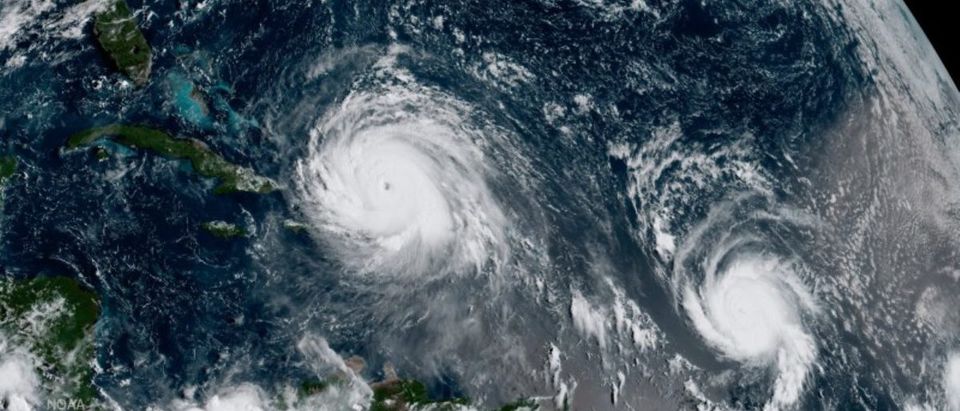Natural disasters did $330 billion worth of damage in 2017, mostly due to hurricanes smashing into the U.S. this fall, making last year the second costliest year for disasters since 2011, according to the reinsurance industry.
Insurers will pay out $135 billion for natural disasters, according to Munich Re, the most on record. Most of the monetary damages came from hurricanes Harvey, Irma and Maria, which hit U.S. and Caribbean islands in the fall. Hurricanes did $215 billion in damage.
While nominal costs of natural disasters — including hurricanes, fires and earthquakes — has grown over time, taking into account inflation and economic growth actually shows disaster costs have been trending down since 1990.
That’s according to research by the University of Colorado’s Dr. Roger Pielke, Jr., who’s spent years studying why natural disaster spending has increased despite no apparent trends in extreme weather.
Pielke’s pushed back against claims made by politicians and activists that global warming is making natural disasters more frequent, thus pushing up disaster costs. Pielke’s work — and the work of others — however, shows this is not the case.
Munich Re (@MunichRe) released their 2017 disaster numbers today.
I’ve updated the analysis of global weather disasters $/global GDP (@UN).
Most important caveat: don’t use disasters to argue about trends in climate.
Further detailshttps://t.co/rLAmxTjAYu pic.twitter.com/7hUJW0lXFV— Roger Pielke Jr. (@RogerPielkeJr) January 4, 2018
The global economy has grown since the 1990s. Hurricane Harvey, for example, was the costliest natural disaster of 2017, inflicting $85 billion when it struck in late August. Harvey dumped record rainfall for several days over the greater Houston area.
But Harvey’s price tag would have been much smaller had it hit in, say, 1960 when Houston’s population was 60 percent less than it is today. Fewer buildings, roads and infrastructure mean the same storm can do less damage.
That’s not all, though, Pielke has noted that even without development, inflation also makes it seem like there are more $1 billion disasters today than there were in past decades. We’ve also gotten better at detecting extreme weather, including through the use of satellites.
4/ Just like comparing box office receipts of Star Wars 1977 to Star Wars 2017 is misleading, simply comparing insurance losses over time is also.
2017 was a big disaster year, but a pretty normal big disaster year.
There will be bigger ones to come.
Bank on it.
END— Roger Pielke Jr. (@RogerPielkeJr) January 4, 2018
Activists often argue that increased disaster costs and disaster declarations show how extreme weather is becoming more extreme and intense due to man-made global warming. Though, climate assessments say there’s no evidence of increasing trends in extremes.
“The most important caveat: don’t use disasters to argue about trends in climate,” Pielke wrote in a blog post that incorporated new Munich Re disaster data.
“Trends in the incidence of extreme weather help to explain this graph as the world has experienced a long stretch of good fortune,” Pielke wrote.
NOW WATCH:
Follow Michael on Facebook and Twitter
The Daily Caller News Foundation is working hard to balance out the biased American media. For as little as $3, you can help us. Freedom of speech isn’t free. Make a one-time donation to support the quality, independent journalism of TheDCNF. We’re not dependent on commercial or political support and we do not accept any government funding.
All content created by the Daily Caller News Foundation, an independent and nonpartisan newswire service, is available without charge to any legitimate news publisher that can provide a large audience. All republished articles must include our logo, our reporter’s byline and their DCNF affiliation. For any questions about our guidelines or partnering with us, please contact licensing@dailycallernewsfoundation.org.













